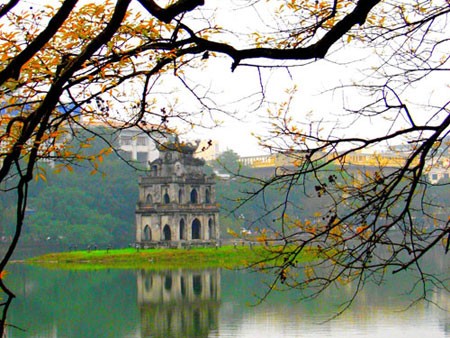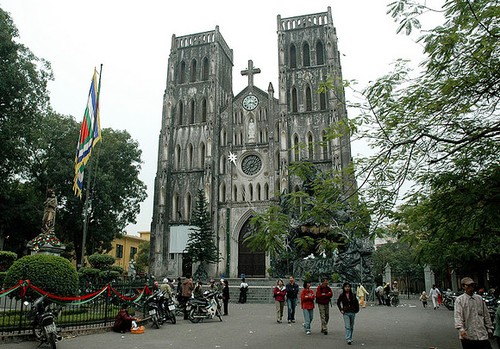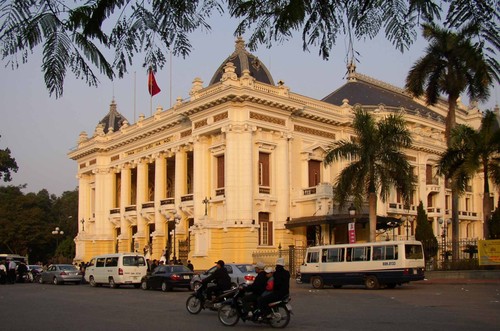(VOVworld) – Hanoi has been in the heart of Vietnam since it became the capital city 10 centuries ago. Historical traces of the Thang Long now Hanoi ancient city and its current rapid developments are the pride of the Vietnamese.
 |
In his rise to the throne in 1010, King Ly Thai To ordered moved the capital city from Hoa Lu to Dai La Citadel. Legends tell that upon arrival in Dai La citadel, the King saw a cloud in the shape of a dragon taking off. He decided to rename the new capital as Thang Long or Soaring Dragon. King Ly Thai To’s decision to choose the most favorable location in the country to build a political, economic and cultural center has been praised by generations of Vietnamese people. The capital city of Hanoi has a favorable road and river traffic geographical position. Located in the heart of the Red River Delta, it is an important political and religious center of the country. Hanoi has also become a meeting place of outstanding people from all over Vietnam. It is now Vietnam’s economic, political and cultural center. In 2010, when Hanoi celebrated its millennium, many historical remains were found in the ancient royal city of Thang Long-Hanoi showing that it was an administrative, political, economic and cultural center of several Vietnamese feudal dynasties. Doctor Nguyen Van Son is Director of the Center of Thang Hoang Royal City Relic:"The citadel of Thang Long has gone through nearly 1,300 years under the dynasties of Ly, Tran, Le, Mac, Nguyen and under French colonialism. This land, rich in history, has evolved for over a thousand years. It was indeed the capital of Dai Viet state for nearly a thousand years before becoming the capital of the Socialist Republic of Vietnam."

Under the feudal regimes of Ly, Tran, Le, and Mac, the Thang Long citadel was the trading, cultural and educational center of the north. Under the Nguyen dynasty, the capital city was moved to Hue. In 1831, King Minh Mang, the second king of the Nguyen dynasty, renamed Thang Long into Hanoi. In 1902, it became the capital of French Indochina from 1902. In 1954, Hanoi was totally liberated and became the capital city of the Democratic Republic of Vietnam now the Socialist Republic of Vietnam.
 |
Under a resolution of the Vietnamese National Assembly, since August 1, 2008, Hanoi city has tripled in size, annexing the entire province of Ha Tay, Me Linh district of Vinh Phuc province and part of Hoa Binh province. Hanoi now covers more than 3,300 square kilometers. On the occasion of the publication of Hanoi expansion until 2030 with a vision to 2050, Prime Minister Nguyen Tan Dung said:"With an area of over 3,000 km2, Hanoi is one of the world's largest metropolitans. The city will have more land for economic and cultural development. An expanded Hanoi will be the capital of a civilized, industrialized and modernized country with 120 million people."
Under the new development plan, Hanoi will become a more modern and beautiful city, yet its cultural and historical values still remain.